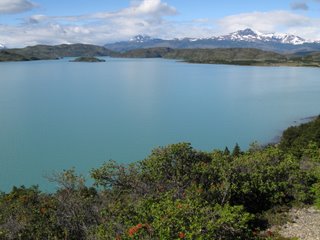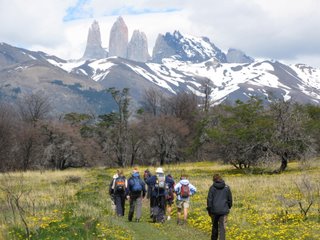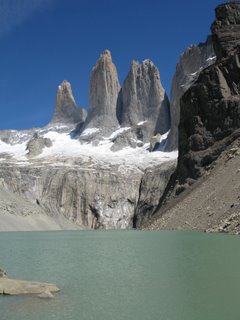The second part of my trip was to the Atacama Desert in Northern Chile. A totally different landscape - one of the driest on the planet. A lot like Death Valley in California but on a much grander scale. I stayed in the little town of
San Pedro de Atacama - a town that was discovered first by the hippy/back-packer crowd and, in more recent times, by the more well-healed traveler set (to which I suppose I belong these days). It seems to be totally reliant on the tourism industry these days but, as they say, don't drink the water - since there is so little of it here and as it leaches through all sorts of nasty stuff before it gets to town, the local water has a very high concentration of arsenic.
This part of the trip was not so strenuous as the Patagonia part with just little day trips out to see different things like geysers, salt flats, interesting rock formations, etc. Nothing quite as spectacular as Patagonia, but a nice place to take it easier for a while.

The Iglesia San Pedro - quite a nice church in the town square of San Pedro.

Sunset in the Valle De La Luna, just outside San Pedro. Everyone goes there to watch the sun go down - with the mandatory
Pisco Sours of course.

The Geysers at El Tatio. This is up in the altiplano around 13,000 ft so the air is a bit thin. The geysers are more dramatic in the early morning when the air is cold and there is more condensation of the steam, by 9 or 10 there is not much to see anymore. You can boil your eggs and heat your milk for coffee in the geysers and have breakfast among all the hissing and gurgling steam.

Flamingos on the salt flats at Laguna Chaxa in the Salar de Atacama (Atacama Salt Flats) - the one with the black tail feathers is an Andean Flamingo, the one without the black tail feathers is a Chilean Flamingo - just in case you were wondering.












